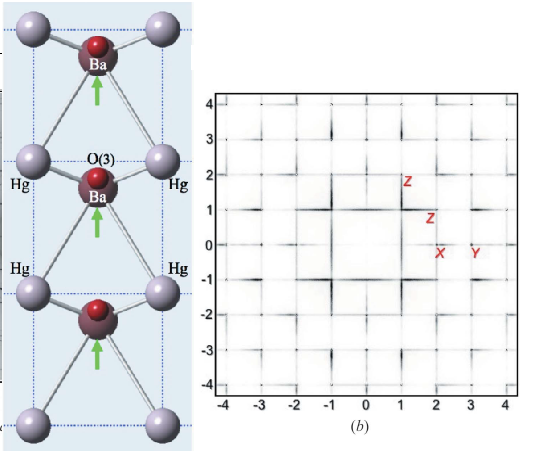It has long been an intention of mine to take our techniques for exploring the way the atoms are arranged in complicated materials and apply them to superconductors. The crystal structures of the oxide (high-temperature) superconductors are similar to those found in ferroelectric materials, which we have looked at in some detail. The difference is that in ferroelectrics the positions of the atoms relate directly to the interesting properties, since the ferroelectricity arises from atomic displacements (that is, from atoms moving around), whereas in superconductors the useful property shows up in how the electrons behave, and while this must be enabled by the crystal structure, the link is less direct. Even so, it seems to me that if we want to have a good idea of how the properties arise from the structure, then we need to know what the structure is.
One of the high-temperature superconductors is HgBa2CuO4+δ, a classic ‘copper oxide layer’ superconductor, descended from the original high-TC materials discovered in the late 1980s. We found some data on it in the literature, and decided that while the modelling there was a useful place to start, the model that was developed did not really do a great job of mimicking the observed scattering. Hence, we decided to re-analyse their data.
The paper came out recently in IUCrJ, which is open access which means you can download it now, without a subscription…so here it is (or click on the image below).
In summary, we find that when the extra oxygen atoms are added to the structure (that’s the ‘+δ’ in the chemical formula), they go into the structure as long strings of atoms, as correctly identified by the authors of the paper with the original data, which is behind a paywall. What we have done that is new is improve the agreement between model and data by adjusting the positions of the surrounding atoms; it makes sense that when you stuff new atoms into a structure, the ones already there have to adjust to accommodate them. Based on things like bond valence sums, we can get some idea of what these adjustments should be, and then create a model crystal in which the atoms are pushed around in sensible ways in response top the added oxygens. These new atomic positions will then influence the environments of other atoms, and of electrons moving through the structure. Here is an image to break up the text:


